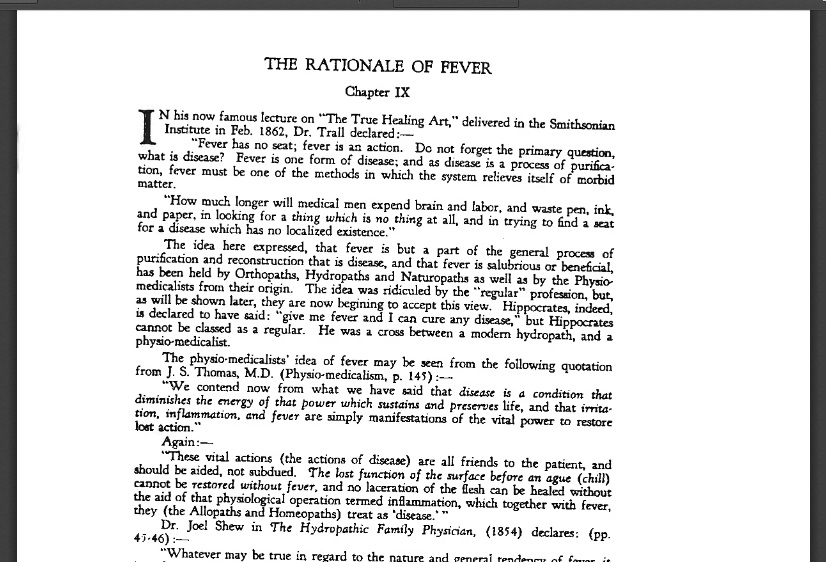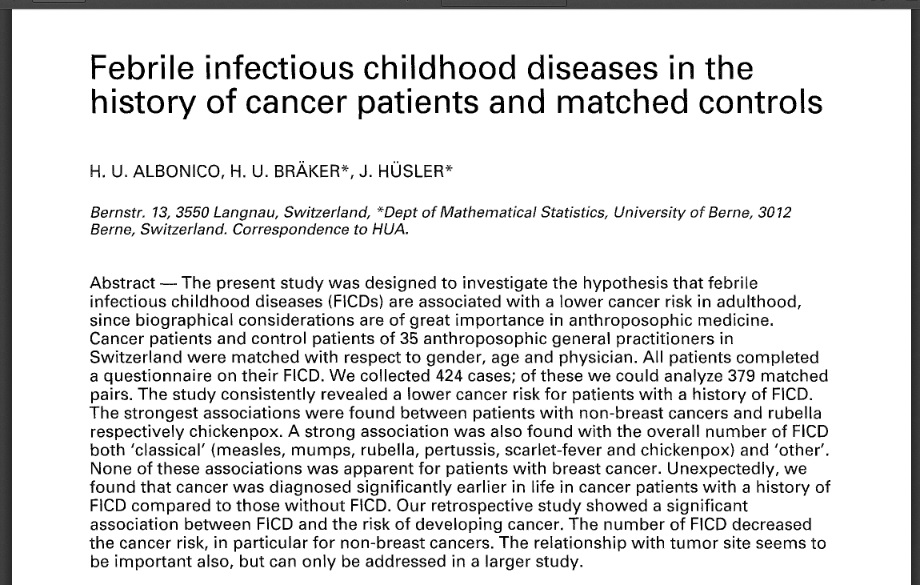The first time I left a bodyworker’s room and got overcome by a fever, I was amazed.
I had no idea about the cascades of natural responses, that could be triggered after the release of physical tension from the spine, nor about the healing effects they could offer. And yet the benefits of fever, and various ways to provoke and exploit fever, have been understood and highly prized in natural healing for hundreds, if not thousands, of years.
It took me a while to associate my fever with the treatment, but I didn’t need to wait long for the benefits. I just knew I needed to get home and rest. My mother had taught me that, and her mother before her. So I got into bed, and as long as I stayed there and didn’t try to exert myself, I felt fine; exhausted, and out of it, but fine. When I emerged two days later, all my aches and pains had gone and I felt great.
Fever can be a routine seasonal event, and it can also be a response to a dangerous problem. But the fever itself is not dangerous, even high fever. It is in fact a survival mechanism, and some consider it to be the highest healing process of all. It hugely increases immune system activity and seems to purge the body of cancer cells. Routine childhood illnesses are associated with fewer chronic diseases later in life. Why would anybody want to stop that? And yet one imagines if a cancer patient is lucky enough to get a fever in a modern setting, they may be told “that’s all you need on top of everything else”, and given drugs to lower it. In fact a fever may be exactly what they do need.
Since my interest in natural healing began, I have had to knock on a lot of doors to find explanations for these things, to learn what they signify, and more importantly, whether there are ways to exploit these principles.

Natural healers have always known about the benefits of fever. From ”Human Life: its philosophy and laws”, Herbert Shelton 1928
Every so often, medicine takes an interest in fever and tries to ‘productise’ it. Dr William Coley was injecting ‘Coley’s Toxins’ into cancer patients, to provoke a strong fever response, and thereby cure cancer. He had a lot of success, and it was mainly medical politics, not results, that favoured radiotherapy instead.
And now certain other injectables use similar principles, such as the experimental innoculation of genetically modified measles in the treatment of cancer. Not that I would want that anywhere near my system, and I would certainly not call it ‘natural healing’. Perhaps the technical glamour of the concoction is a way to justify commercial investment. But the rocket science employed belies the essential crudity of the principle: any morbid matter introduced into the body will provoke a strong immune response. What had originally alerted Coley to the therapeutic potential of fever was the observation that cancer survival rates were actually better prior to the routine sterilisation of surgical instruments.
This all depends on the patient having an already intact natural immune system, of course, and surviving the procedure. It is the strong who produce the most spectacular fevers and other symptoms. The weak and depleted, less able to react, are more likely simply to wither to any toxic insult. We cannot escape the fact that natural immunity is the only immunity.
So why are we trying to stop natural measles – knowing it probably protects against cancer and other diseases – only to reintroduce a synthetic version to combat the ‘unexplained’ explosion of adult cancers a generation later? That doesn’t make a lot of sense when one is paying attention.
Perhaps modern researchers should be asking if it is really such a great idea to be tampering with the natural balance of the immune system at all; when most childhood illnesses are safe, if properly managed, and actually help the child’s immune system to develop properly. And perhaps Coley should have asked himself some similar questions: why were his patients diseased in the first place, and how would they fare in the longer term?
The principles modern research has brought to our attention are fascinating, but not new. It does seem these ideas only ever attract research funding if a patentable product might come out of it. And so the whole situation gets spun to commercial advantage, with heroic headlines saying things like new vaccine for cancer on the horizon – clever scientists use modified viruses to rid the world of disease etc. Promises, promises…
In natural healing the most important thing to know is when to intervene and when to leave things alone. Sometimes the best medicine is to do nothing and let nature take its course. The biggest mistake in healing is to believe that we can improve upon nature.

Notes and Warnings:
- Discussion of natural healing principles and not medical advice.
- I do not treat or give advice on cancer, or any medical condition. I treat people, not conditions, and I advise on health, not disease.
- For advice on management of fever or the treatment and diagnosis of cancer, please seek individual advice.
- Fever may not be dangerous in itself, but the causes of fever can be, such as sepsis, or malaria. These things need proper attention.
- People often ask “what about febrile convulsions?”. That is a separate subject in itself, but suffice here to say that giving drugs to a fevered child to bring down the fever does not prevent convulsions, and shouldn’t be done (Source: NICE guidelines). See Robert Mendelsohn MD “How to Raise a Healthy Child in Spite of your Doctor” for more information on managing childhood fevers.
